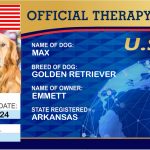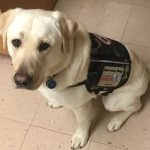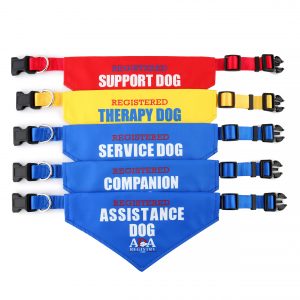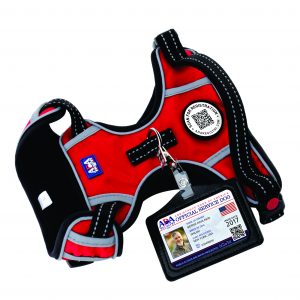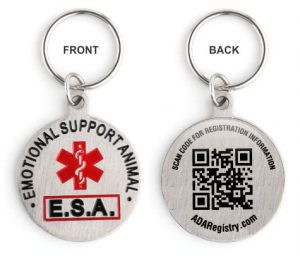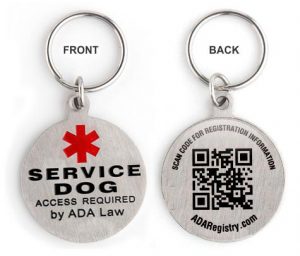service dog training
April 13, 2020

Eric Caron, a retired guidance counselor who has been blind since birth, recently moved to a new home. He noticed his guide dog, a yellow Labrador retriever named Ryan, had trouble leading him across a busy intersection he must cross regularly. Caron knew what that meant: It was time to retire Ryan, a near-senior citizen at 9 years old, to pet status and get a new guide dog.
But as the novel coronavirus spread, Caron’s “dog day” appointment on April 2, at the New York-based Guiding Eyes for the Blind, was postponed indefinitely.
“I had packed my bags a good month before the class date, including some special toys for the new dog,” said Caron, of Brattleboro, Vt. “I had a new pair of shoes for walking and a special shirt for graduation. I was ready. And now, you just have to take that bag and roll it in the closet.”
Like many people with disabilities, Caron relies on a service dog to help him navigate not just the world, but also his home and property. The dogs are trained to do specific tasks such as guiding people in public, opening doors and interrupting anxiety attacks. That training can last up to two years, and it is now on hold nationwide as the coronavirus crisis continues.
The handoff of already-trained service dogs to people like Caron also is paused, because it has to be done in person and with instructors and clients standing close together. That means people whose dogs are ready to retire, as well as people who have been on waiting lists a year or longer to get their first service dogs, remain in limbo.
“We’re under orders, depending on what state you live in, not to do activities that are not deemed as essential. Because this is considered education, it’s not deemed essential,” said Ben Cawley, director of training at Guiding Eyes for the Blind. “A guide dog-user would argue that it is essential, but we can’t be putting our staff or volunteers or applicants in an irresponsible situation.”
Check Out Our Store


